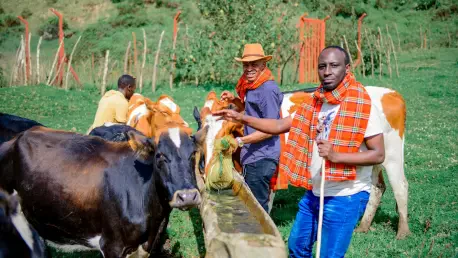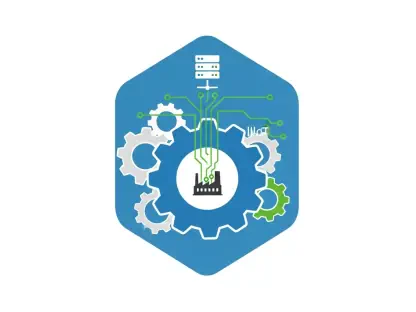In the heart of Kenya’s agricultural regions, farmers are grappling with a crisis that strikes at the very foundation of their livelihoods and the nation’s food supply, as unpredictable weather patterns driven by climate change wreak havoc on their fields. Once-reliable seasons have morphed into a gamble of extreme rains, devastating droughts, and unexpected frosts, leaving crops vulnerable and communities on edge. This growing instability not only jeopardizes the harvests that feed millions but also deepens economic and social challenges across the country. The struggle to adapt to these volatile conditions reveals a stark reality: without immediate action and long-term solutions, the specter of food insecurity looms larger than ever. As farmers face dwindling yields and rising desperation, the broader implications for national stability and resilience come into sharp focus, demanding attention from policymakers, experts, and citizens alike. This pressing issue underscores the urgent need to address both the symptoms and root causes of a warming planet.
Devastating Weather Impacts on Agriculture
The ferocity of climate-driven weather events has left Kenyan farmers reeling from repeated blows to their crops and livelihoods. In recent years, heavy rains have washed away entire fields, while frost and hailstorms have shattered the delicate balance required for successful harvests. These erratic conditions create a narrow window for planting, where even a slight miscalculation can spell disaster for staple crops like maize and beans. Agricultural experts note that the unpredictability of rainfall patterns has made traditional farming schedules obsolete, forcing farmers to rely on guesswork with often dire consequences. Many have been unable to recover from these losses, turning to government relief programs for basic sustenance. The toll of such destruction extends beyond individual farms, disrupting local food supplies and exposing the fragility of an agricultural system under siege by a changing climate.
Compounding the problem is the sheer intensity of these weather extremes, which leave little room for adaptation in a sector already stretched thin. Floods not only destroy crops but also erode fertile soil, diminishing the land’s long-term productivity. Meanwhile, prolonged droughts parch the earth, making it nearly impossible to cultivate without costly irrigation systems that most small-scale farmers cannot afford. The result is a vicious cycle of loss and dependency, where each season brings new uncertainties. Reports from rural areas highlight stories of entire communities facing shortages, with some unable to plant at all due to untimely weather shifts. This relentless barrage of challenges illustrates how deeply climate change has infiltrated every aspect of farming, turning what was once a predictable craft into a high-stakes battle against nature’s whims.
Economic and Social Ripples of Crop Failures
Beyond the fields, the economic fallout from diminished agricultural yields sends shockwaves through Kenyan markets and households. Rising prices for staple foods like potatoes have become a harsh reality for consumers, while shortages of livestock feed threaten the viability of animal husbandry, a critical income source for many. This inflation of basic goods places an unbearable burden on low-income families, who spend a significant portion of their earnings on food. The strain is evident in urban centers as well, where market instability fuels broader economic unease. Farmers, unable to sell enough to cover their costs, often fall into debt, further eroding their financial stability. This interconnected web of hardship reveals how agricultural crises transcend rural boundaries, impacting the entire nation’s economic health.
The social consequences of these challenges are equally profound, as climate-driven disruptions exacerbate existing vulnerabilities. Floods and droughts have led to housing instability, with families displaced by natural disasters struggling to rebuild. In some regions, climate migration has emerged as a growing issue, with rural dwellers moving to neighboring areas or urban slums in search of better prospects, only to strain already limited resources. This movement often sparks tension over land and services, fraying community ties. Moreover, the psychological toll on farmers cannot be overlooked, as the constant threat of crop failure breeds anxiety and despair. These cascading effects highlight the urgent need for systemic support to address not just food production but also the broader human cost of environmental upheaval, ensuring that no one is left behind in the fight for stability.
Pathways to Resilience and Adaptation
Amid the mounting challenges, innovative strategies offer a glimmer of hope for Kenyan farmers seeking to weather the storm of climate change. Government officials have stepped in with guidance on optimal planting times, emphasizing the importance of aligning crop cycles with fleeting windows of favorable weather. Agricultural officers suggest that sowing seeds like maize just before expected rainfall can bolster root systems, enhancing resilience against harsh conditions. Such advice, while practical, requires precise forecasting tools that are often out of reach for many smallholders. Nevertheless, these efforts represent a critical first step in equipping farmers with the knowledge to navigate an increasingly unpredictable landscape, fostering a sense of agency in the face of adversity.
Equally promising are expert-backed solutions like agroforestry, which integrates trees into farming systems to mitigate the effects of extreme weather. Trees can regulate temperatures, shield crops from frost and hail, and manage water flow during floods or droughts, creating a more stable growing environment. Specialists advocate for widespread adoption of this practice, noting its dual benefit of enhancing soil health and providing additional resources like timber or fruit. Alongside these measures, individual actions—such as growing personal food supplies—can reduce reliance on faltering commercial markets. Yet, the true path to lasting security lies in addressing the root cause through global emission reductions. By combining immediate adaptations with long-term environmental commitments, there is potential to build a more robust agricultural future.
Building a Sustainable Future
Reflecting on the struggles of Kenyan farmers, it becomes clear that the battle against climate-driven food insecurity demands both urgent interventions and visionary planning. Immediate actions, such as refined planting schedules and government support, have helped countless farmers salvage what they can from unpredictable seasons. The promotion of agroforestry stands out as a beacon of sustainable innovation, with many embracing tree planting to protect their fields from nature’s extremes. Looking ahead, the focus must shift to scaling these adaptive practices, ensuring access to resources and training for all farmers, regardless of their means. International cooperation to curb emissions remains a cornerstone of any lasting solution, as local efforts alone cannot stem the tide of a warming planet. By investing in resilient systems and fostering community-driven initiatives, Kenya can chart a course toward food security that withstands the challenges of tomorrow.









